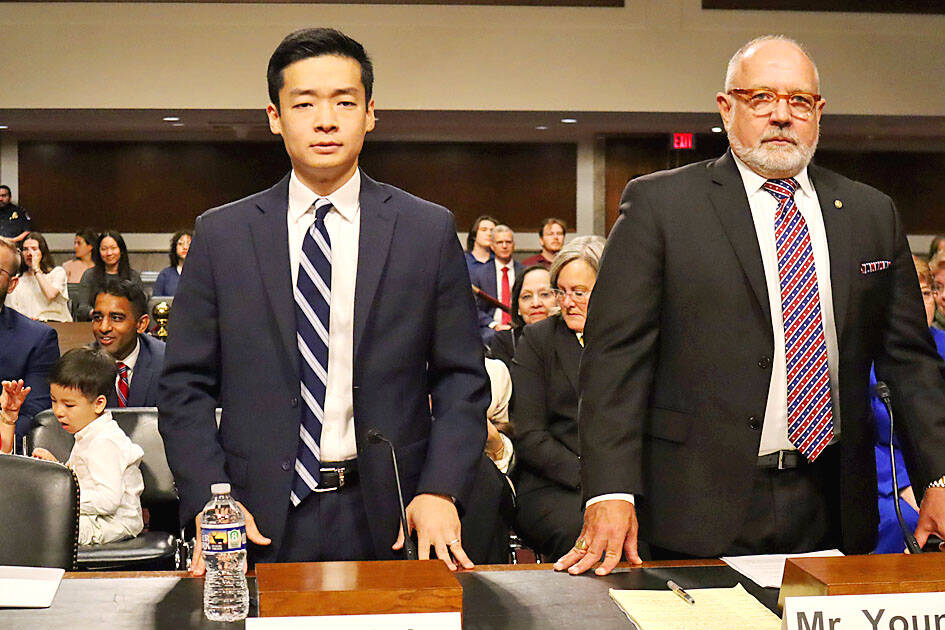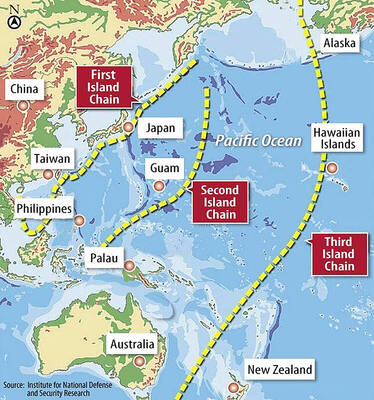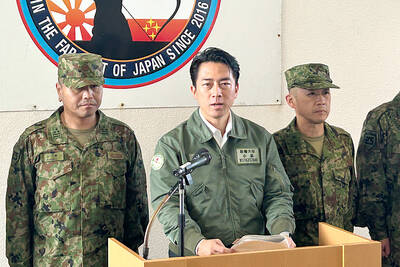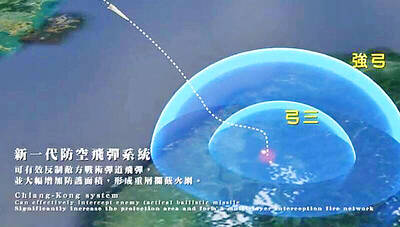The nominee to be the Pentagon’s senior official for the Indo-Pacific region on Tuesday said that he strongly supported US President Donald Trump in saying that Taiwan should spend up to 10 percent of its GDP on defense.
Taiwan’s proposed defense budget for next year is to be 3.32 percent of GDP, and President William Lai (賴清德) in August said the goal is to hit 5 percent by 2030, as the nation seeks to bolster its deterrence against China.
John Noh told his confirmation hearing at the US Senate Armed Services Committee that Taiwan’s current moves to increase its defense spending were “all promising.”

Photo: CNA
“It was President Trump who said that Taiwan, which is an island that faces an existential threat from the People’s Liberation Army, from the Chinese military, that Taiwan should spend upwards to 10 percent of its GDP on defense. I strongly support that,” he said.
Noh was responding to a question from US Senator Roger Wicker about US arms deliveries to Taiwan under the Presidential Drawdown Authority.
Noh, who is currently serving at the Pentagon as deputy assistant secretary for East Asia, added that while he applauds Taiwan’s efforts to increase defense spending, “Taiwan absolutely needs to do its part — spend more and acquire the kind of asymmetric capabilities that will be most relevant in an invasion scenario.”
Pushed by the US, Taiwan has been working to transform its armed forces to be able to wage “asymmetric warfare,” developing more mobile and lethal weapons including missiles, as well as cheaper systems such as drones that can be used for surveillance, as well as on attack missions.
Speaking to reporters at the legislature in Taipei yesterday, Minister of National Defense Wellington Koo (顧立雄) said defense spending was based on the enemy threat level.
The focus is on “asymmetric” warfare, resilience, bolstering the reserves and combating China’s “gray zone” activities, Koo said, referring to actions designed to pressure Taiwan that stop short of actual combat, such as regular military patrols near the nation.
“In fact the president has already promised that we will raise our defense spending, the core defense expenditure,” Koo said. “It will increase steadily to finally reach the 5 percent that the president has promised.”
However, he said that “overall fiscal conditions and capacity-building requirements must also be considered.”
Taiwan will continue to strengthen its ability to defend itself and is continuing with military reforms which are put into practice with real-life drills, he said.
Koo made the remarks before a legislative hearing on a NT$550 billion (US$18 billion) special budget aimed at boosting social and economic resilience. The plan includes NT$113.2 billion earmarked for hardening military communications systems, upgrading and maintaining facilities and infrastructure, and bolstering maritime defense.
Additional reporting by CNA

LIMITS: While China increases military pressure on Taiwan and expands its use of cognitive warfare, it is unwilling to target tech supply chains, the report said US and Taiwan military officials have warned that the Chinese People’s Liberation Army (PLA) could implement a blockade within “a matter of hours” and need only “minimal conversion time” prior to an attack on Taiwan, a report released on Tuesday by the US Senate’s China Economic and Security Review Commission said. “While there is no indication that China is planning an imminent attack, the United States and its allies and partners can no longer assume that a Taiwan contingency is a distant possibility for which they would have ample time to prepare,” it said. The commission made the comments in its annual

DETERMINATION: Beijing’s actions toward Tokyo have drawn international attention, but would likely bolster regional coordination and defense networks, the report said Japanese Prime Minister Sanae Takaichi’s administration is likely to prioritize security reforms and deterrence in the face of recent “hybrid” threats from China, the National Security Bureau (NSB) said. The bureau made the assessment in a written report to the Legislative Yuan ahead of an oral report and questions-and-answers session at the legislature’s Foreign Affairs and National Defense Committee tomorrow. The key points of Japan’s security reforms would be to reinforce security cooperation with the US, including enhancing defense deployment in the first island chain, pushing forward the integrated command and operations of the Japan Self-Defense Forces and US Forces Japan, as

IN THE NATIONAL INTEREST: Deputy Minister of Foreign Affairs Francois Wu said the strengthening of military facilities would help to maintain security in the Taiwan Strait Japanese Minister of Defense Shinjiro Koizumi, visiting a military base close to Taiwan, said plans to deploy missiles to the post would move forward as tensions smolder between Tokyo and Beijing. “The deployment can help lower the chance of an armed attack on our country,” Koizumi told reporters on Sunday as he wrapped up his first trip to the base on the southern Japanese island of Yonaguni. “The view that it will heighten regional tensions is not accurate.” Former Japanese minister of defense Gen Nakatani in January said that Tokyo wanted to base Type 03 Chu-SAM missiles on Yonaguni, but little progress

INTERCEPTION: The 30km test ceiling shows that the CSIST is capable of producing missiles that could stop inbound missiles as they re-enter the atmosphere Recent missile tests by the Chungshan Institute of Science and Technology (CSIST) show that Taiwan’s missiles are capable of intercepting ballistic missiles as they re-enter the atmosphere and pose a significant deterrent to Chinese missile threats, former Hsiung Feng III missile development project chief engineer Chang Cheng (張誠) said yesterday. The military-affiliated institute has been conducting missile tests, believed to be related to Project Chiang Kung (強弓) at Pingtung County’s Jiupeng Military Base, with many tests deviating from past practices of setting restriction zones at “unlimited” and instead clearly stating a 30.48km range, Chang said. “Unlimited” restrictions zones for missile tests is